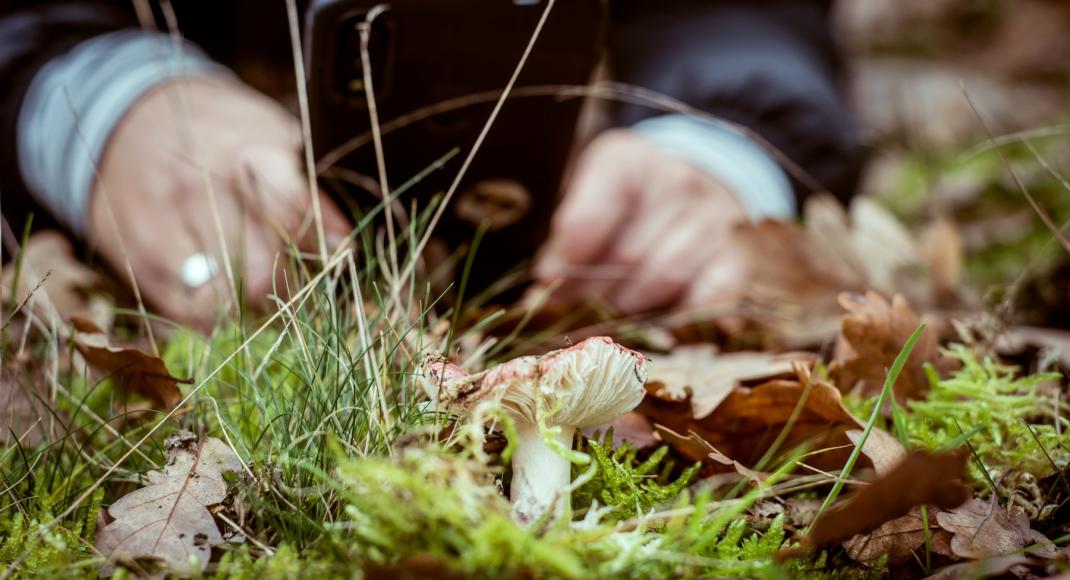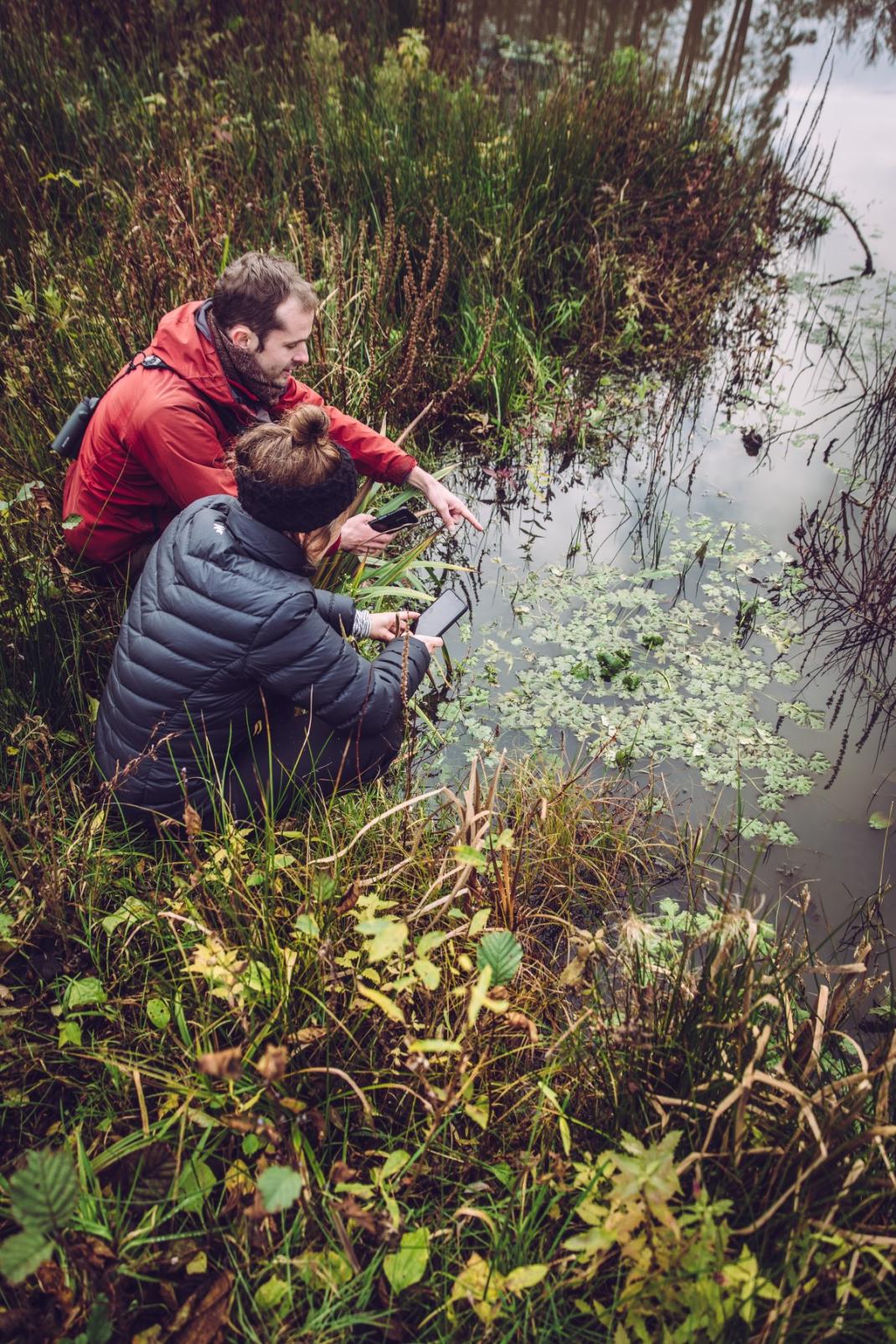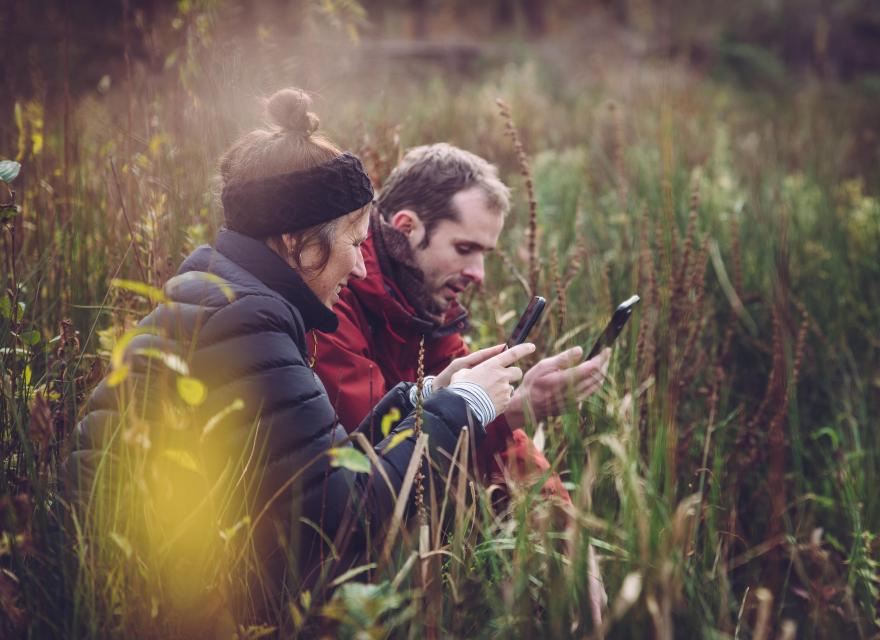Innovation for more and better nature
26.000 hectares of Flemish nature managed in 500 different nature reserves, 133.000 members, 750.000 downloads of the ObsIdentify-app and the impressive site waarnemingen.be. The independent association Natuurpunt can present impressive numbers and results. At the heart of this success lies, in addition to a professional team, the commitment of countless volunteers and citizen scientists. Natuurpunt is a pioneer in the field of citizen science and science communication. Hannes Ledegen, Coordinator of Snapp the Nature/ObsIdentify and Wouter Vanreusel, Head of Natuurstudie, give us a look at their approach and the future plans of Natuurpunt.

Protecting the vulnerable and threatened nature in Flanders is the main goal of Natuurpunt. Bringing people together is also high on their agenda. Every year thousands of activities are organised such as guided walks, management works, courses and workshops. And of course there is also a scientific objective, which is mainly followed up within Natuurpunt's study department, Natuurpunt Study, namely to observe and study the health of Flemish nature together with citizens, volunteers and working groups. Numbers and knowledge about biodiversity are essential for its preservation. Citizen scientists play an indispensable role in this.
Reduction of thresholds
Natuurpunt has a solid tradition within citizen science, do you think that the role of the volunteer, the citizen scientist, has changed over the years?
Hannes Ledegen: ‘Citizen science is of all times. The bird counters who were commissioned by Wells Cooke in the 18th century to record the arrival dates of migrating birds, could in fact be called the first citizen scientists in biology.. Just to say that it is a firmly established tradition for people to make censuses and measurements of the fauna and flora that surrounds them.’
Wouter Vanreusel: ‘In Flanders, for example, biologists and motivated collectors were already recording structured data in the 1980s. The problem was, however, that everyone collected their own data into stand-alone notebooks or databases, often without backup. For example, there was an atlas project on butterflies, a spider database and a dragonfly database. You could say that there were important counting projects but a widely rolled out, quality, systematically monitored nature study was missing.’
Waarnemingen.be now contains about 52.5 million observations for Belgium and every year about 8.5 million observations are added.
World's most intensive nature census
At what point did this change?
Hannes Ledegen: ‘The big breakthrough came with the launch of Waarnemingen.be in 2008, but actually also with our large bird and butterfly censuses that started some 20 years ago. Both were milestones in bringing data together and keeping them structured, while at the same time making the observations accessible and publicly available.’
Wouter Vanreusel: ‘Waarnemingen.be now contains about 52.5 million observations for Belgium and every year about 8.5 million observations are added. The observations of the citizen scientists are checked by a team of species specialists, 160 in Flanders alone. These gigantic quantities of data are used by the government, Natuurpunt Study and numerous other partners to solve research questions. For example, we know exactly where the boxwood moth strikes and we detected the Asian hornet long before there was any warning. Recently, our ObsIdentify-app added an important threshold reduction for the public. You really don't have to be a specialist anymore to make a valuable contribution to nature observation. With your smartphone in your pocket, you can simply take a picture. The date, time and position of your observation are added instantaneously and the species is identified immediately by our powerful image recognition tools. The app is now installed on some 450,000 smartphones in Belgium and the Netherlands, making it one of the most intensive nature censuses in the world. We log the most records or sightings per area in the world.’
Hannes Ledegen: ‘ObsIdentify is also a better reflection of the average population. The user is central to the app. Everyone marvels at a small animal or plant and the app ensures that this admiration contributes in one click to the largest citizen science project in the country. To motivate young users, the app also includes tailored tips and real game challenges. Gamification is a powerful tool. Not to convince people to install an app, but to motivate them to keep using it. One of the great strengths is that we now have an active community, which we can manage in real-time with badges and customized challenges. This allows us to respond quickly and get current science questions answered faster than ever. For example, a naturalist visiting a specific nature reserve can be given the challenge on the spot to look for 8 dragonfly species or to spot a number of bumblebees in 'wild bee week'.’
Everyone marvels at a small animal or plant and the app ensures that this admiration contributes in one click to the largest citizen science project in the country.
Finger on the pulse
To what extent do the observations end up in the scientific world or do they form a basis for the formulation of a nature policy by the government?
Wouter Vanreusel: ‘It has long been clear that citizen observations are important to professional scientists. By the way, we monitor the quality of our observations very strictly through our network of species specialists and there is also a great form of social control. Selfies and houseplants have no place in our tools. In addition, we also manage a group of volunteers within our scientific monitoring networks. They measure the status of a particular species several times a year at defined locations. This is how we keep our finger on the pulse. These volunteers have often come through our working groups and departments, they have followed training courses, gained knowledge through guides or attended classes at our Nature Academy.’
Hannes Ledegen: ‘The days when people laughed about citizen science are far behind us. We have 40 to 60 collaborations with universities and research institutes every year. Most of our data are also published as open data, they pass the scientific test. The appreciation for our work is increasing, many government services consult the data of Natuurpunt Study and the Nature and Forest Agency, for example, uses our observations in a structural way to outline the Flemish nature policy. For example, we provide the data on the distribution of the wolf and the beaver. We also see our tools popping up more and more often in curricula and learning goals. Although there is still some profit to be made in the field of education to motivate young people and teenagers to get to know nature in a pleasant, interesting way. We are asking for that, to work it out further.’

Clear feedback
What role does innovation play within Natuurpunt?
Wouter Vanreusel: ‘Innovation is crucial to us. We always try to offer the best of the best with our tools. It is thanks to the image recognition software developed by a volunteer that our app ObsIdentify is so performant. We also want to continue down that path by adding sound recognition and moving images to the deep learning AI networks that the app uses. We aim to offer our users a personalized, customized experience.’
Hannes Ledegen: ‘We continue to be at the forefront of technological innovations. We are currently running tests for sound recognition at our partner Naturalis in the Netherlands. Such an approach also catches on internationally, we have European and international partners who come to see us to make the international version of our tools even more deployable across borders. For example, our AI recently started recognizing almost 5,000 European species that do not occur in our country.’
Wouter Vanreusel: ‘Of course, the nature experience of our users always remains central. We don't want to touch that. And we make it a point to give our citizen scientists lots of feedback and clear feedback. We send personal e-mails, newsletters and nature messages (also in-app), we represent no less than 200 thematic study working groups and we offer our own academy with courses and training. In every Flemish municipality there are departments and working groups of Natuurpunt active.’
Hannes Ledegen: ‘The bottom line is that our citizen scientists themselves, both those who are with us since the very beginning and the youngsters who today do nature observation through the games on the ObsIdentify app, are our best advocates for more and better nature.’
Interview and text: Hilde Devoghel (Tales and Talks)
Pictures: An Van Gijsegem
